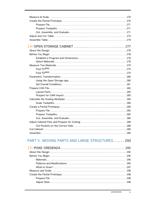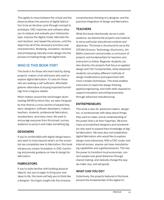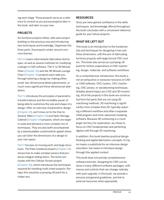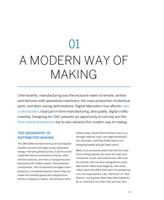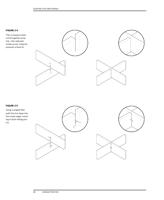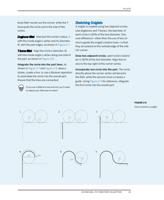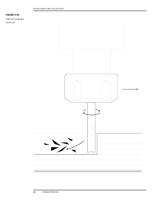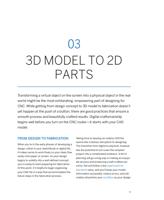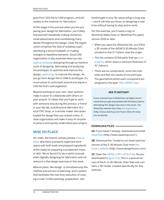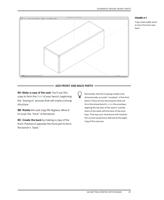
1: OVERLAP
Overlapping joints involve connecting two or
more parts lengthwise, often to achieve a
longer dimension than standard material
sizes (a process traditionally known as scarf-
ing). In its simplest iteration, the ends of each
part are pocketed to overlap one another for a
specific length. Adhesives or mechanical fas-
teners join the two parts. Woodworkers also
call this connection a simple half lap, a splice
lap, or half lap scarf.
A more precise fit can be achieved by using
a key. A keyed overlap joint is created by
pocketing a positive shape on one part, which
fits into a negatively carved counterpart on
the connecting part. There are many exam-
ples of hybrid overlap connections that use
pocketed keys that create varying degrees of
structural performance based on the shape
and connection between parts.
2: EDGE TO EDGE
Edge-to-edge connections happen at the
angled intersection of two edges. Finger and
dovetail joints are common examples of edge-
to-edge joints. Dovetails give added structural
capacity to an edge-to-edge connection by
keying the fingers. Adapting dovetail joints to
CNC projects involves profile cutting on one
hand, and sloped contour cuts on the other.
Finger (or box) joints are well suited for
CNC, as long as fillets are used to ensure a
positive connection between “fingers” on
each “hand.”
AtFAB designs keep the edge-to-edge con-
nections simple by using lazy fingers that
keep the number of interlocking fingers to a
minimum. They provide maximum structural
integrity of the finger joint while not distract-
ing from the piece as a whole.
EIGHT BASIC CNC JOINT CONDITIONS
FIGURE 2-16
Keyed and standard
overlapping joints
FIGURE 2-17
Dovetails, complex fin-
ger joints, and lazy fin-
gers
02/END MILL TO FURNITURE COLLECTION
49













